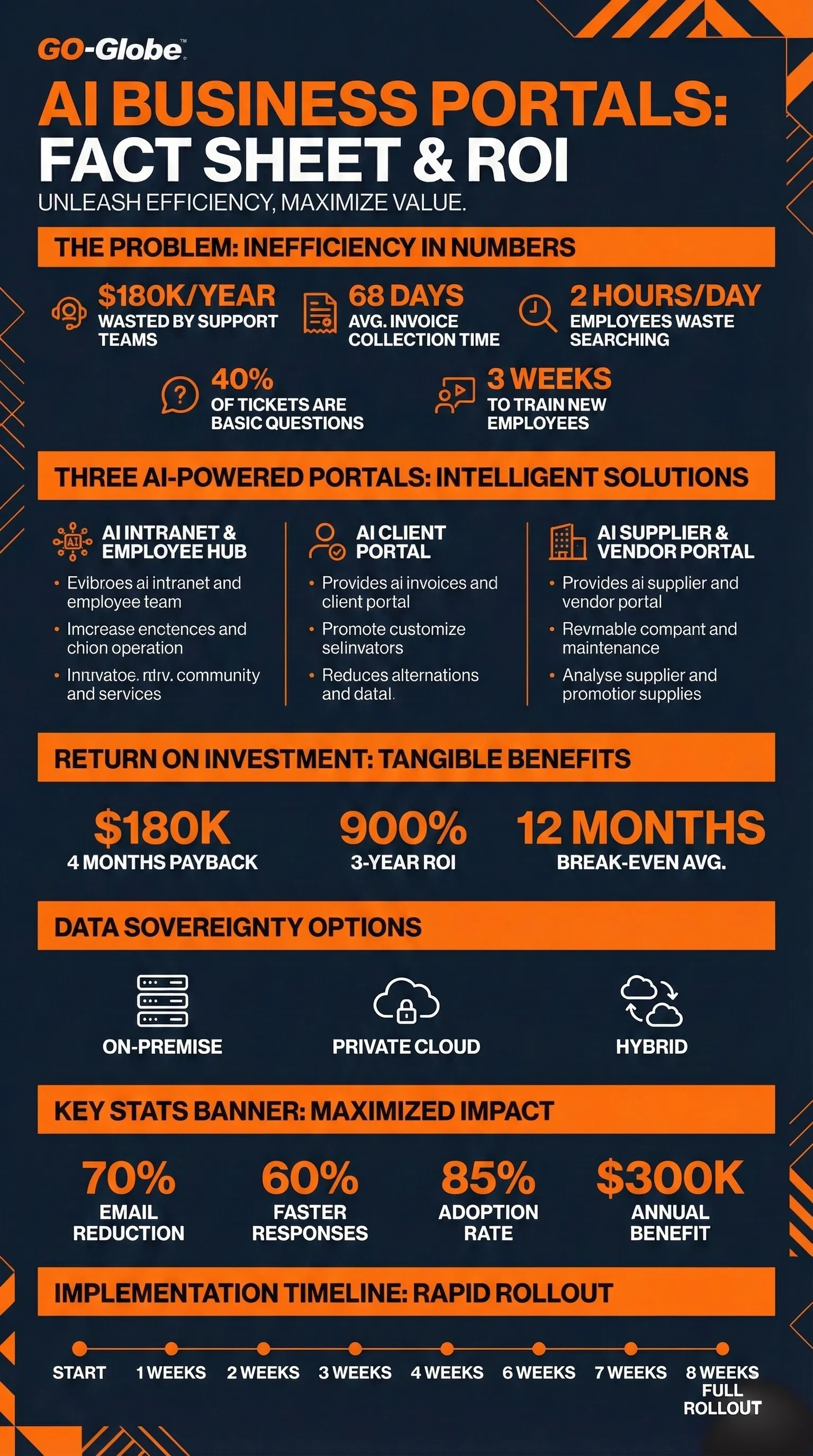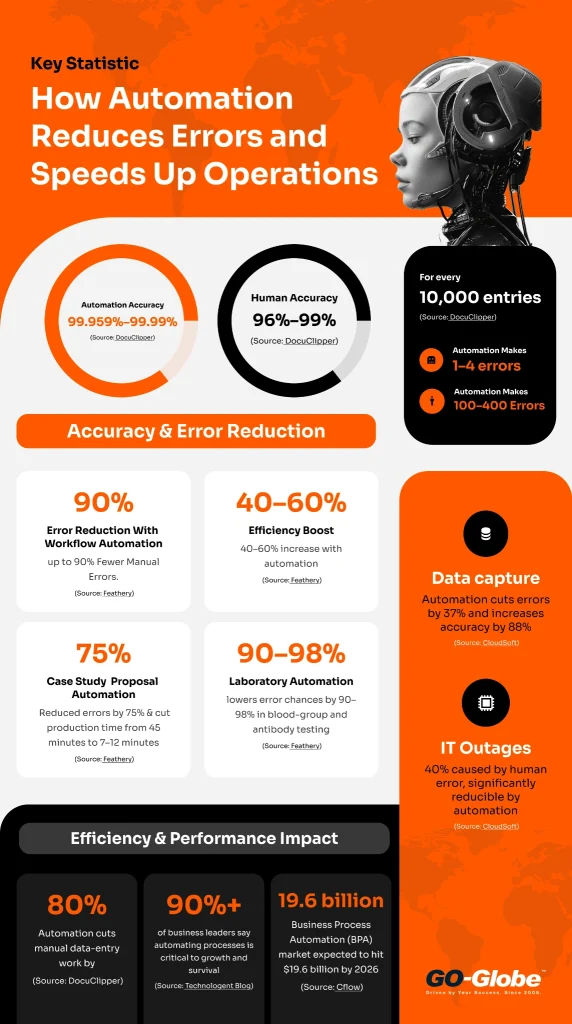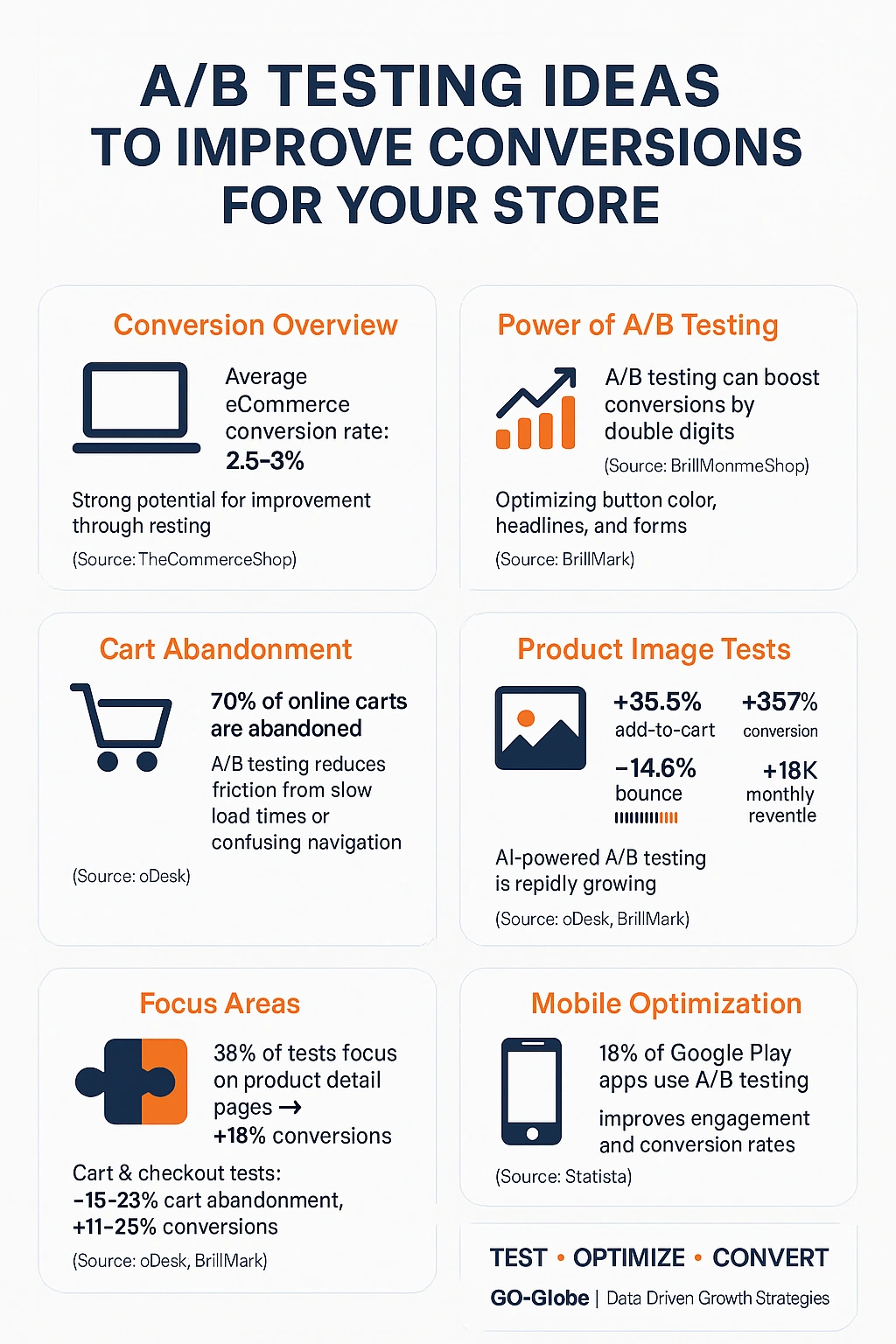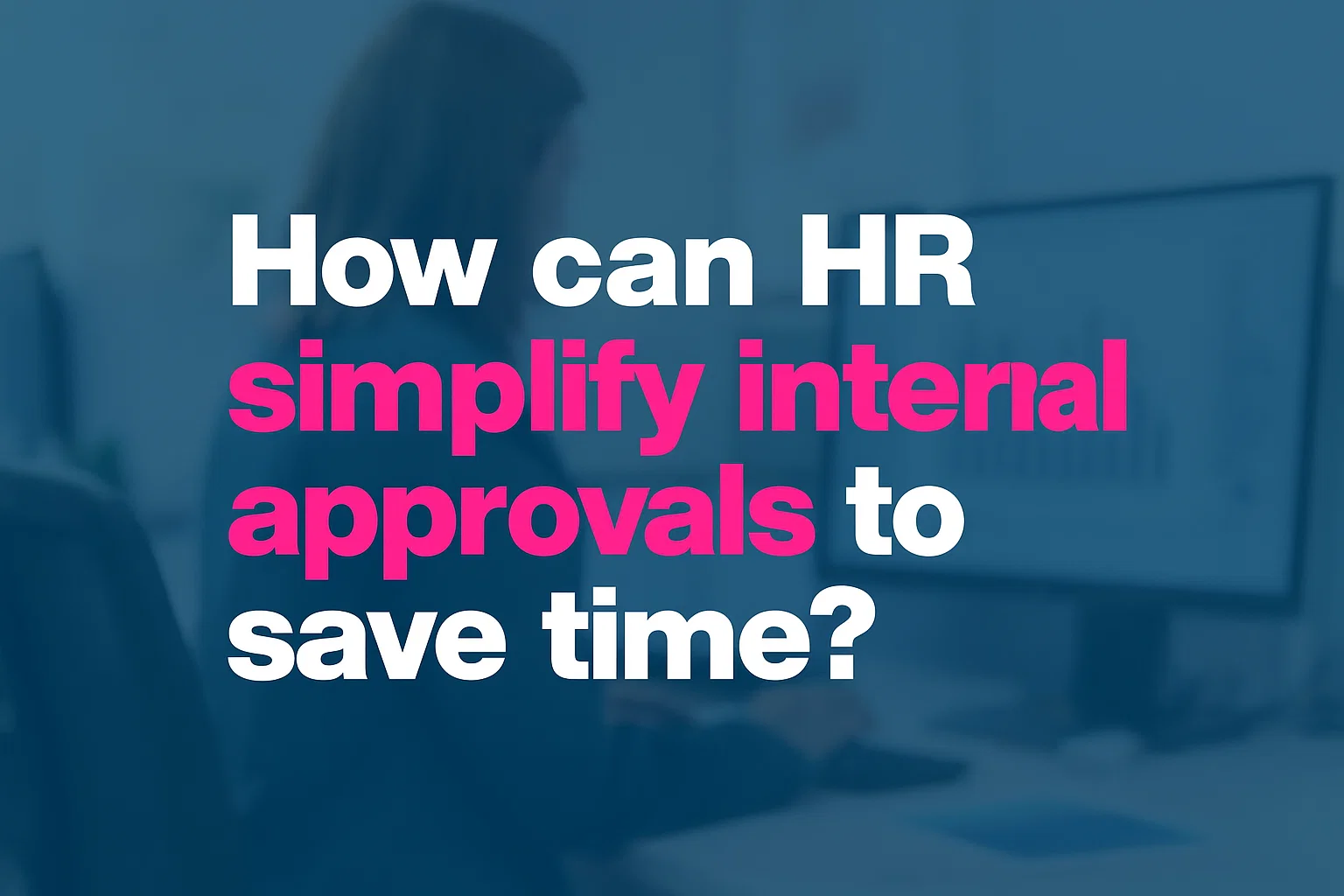The Chatbot ROI Calculator: Real 2026 Numbers That Shocked Us
Many businesses adopted chatbots without checking costs first. They thought chatbots were just a neat tech trend. But 2026 changed everything. Suddenly, leadership wanted real numbers. Support costs were rising fast. In fact, in the U.S., a single support agent costs around $45,000 per year. Customers also wanted answers instantly, day and night. Chatbots had to deliver or risk complaints. Companies could not rely on “cool features” alone.
GO-Globe studied chatbot ROI 2026 data across many industries and countries. We saw clear patterns in cost savings and efficiency. Businesses that measured performance early could see which chatbots worked best.
This blog will show how chatbot ROI is calculated, what numbers really matter, and how much companies actually saved. By the end, you will understand the real conversational AI benefits.
Contents
- 1 Why Chatbot ROI Became a Serious Business Question in 2026
- 2 Understanding the Real Costs Behind AI Chatbots Today
- 3 9 Ways to Measure and Maximize ROI for AI Projects
- 3.1 Understanding Critical Areas Where AI Delivers Strong Returns
- 3.2 Defining Clear Goals and Key Metrics for AI ROI
- 3.3 Assessing Current Performance: Establishing a Baseline
- 3.4 Estimating Revenue and Operational Gains from AI
- 3.5 Calculating Costs and Investments for AI Projects
- 3.6 Evaluating Soft or Intangible Benefits
- 3.7 Setting a Realistic Timeframe for ROI Realization
- 3.8 Evaluating the Opportunity Cost of Not Implementing AI
- 3.9 Handling Challenges During AI ROI Measurement
- 4 8 Key Metrics That Matter Inside a Chatbot ROI Calculator
- 5 Top 3 Mistakes Companies Make When Measuring AI ROI
- 6 How GO-Globe Builds Chatbots That Focus on ROI, Not Hype
- 7 How GO-Globe Builds Chatbots That Focus on ROI, Not Hype
- 8 Why Smart Chatbot ROI Planning Pays Off
- 9 FAQs
Why Chatbot ROI Became a Serious Business Question in 2026
Before 2026, chatbots were mostly “fun projects.” Companies used them to look modern. They did not check if chatbots actually saved money.
In 2026, things changed. Chatbots moved under finance and operations, not marketing. Businesses had to prove their value with real numbers. This is when chatbot ROI 2026 became important.
Here are the reasons:
- Support staff salaries went up, about $45,000 per year in the U.S.
- Hiring and keeping good support staff became hard.
- Customers wanted fast, 24/7 answers, which made human support costly.
Chatbots were now judged on real work, including:
- How many chats they handled without humans.
- How many support tickets they stopped, saving time and money.
By 2026, businesses learned chatbots helped with support cost reduction and made work faster. Measuring ROI before using a chatbot became very important.
Understanding the Real Costs Behind AI Chatbots Today
Chatbots can save money, but they are not free. Many businesses see only the surface costs. To know the real price, we can divide it into clear parts.
Setup & Design:
- Conversation flow creation
- Intent mapping
- Brand tone setup
Training & Data Preparation:
- FAQs and policy documents
- Product or service data
System Integrations:
- Website
- CRM systems like HubSpot or Salesforce
- ERP or ticketing systems
Ongoing Maintenance:
- Updating answers regularly
- Monitoring failed responses
- Improving conversation flows over time
Cheap chatbot tools may seem cheap at first. But they often fail because they only answer simple questions. Also, they break when business rules change
9 Ways to Measure and Maximize ROI for AI Projects
Measuring AI ROI can feel tricky. Many businesses start projects without knowing what to track. To get real value, you need clear goals, metrics, and monitoring. This section shows how AI delivers real returns and how you can measure them smartly.
Understanding Critical Areas Where AI Delivers Strong Returns
AI can help many parts of a business, but results vary. Not all companies see the same gains. It depends on how AI is used, business size, and industry.
Here are key areas where AI often delivers strong returns:
- Customer service & experience: 74% of companies report improvements. Faster answers and fewer complaints save time and money.
- IT operations & infrastructure: 69% of businesses see gains from automation and smarter monitoring.
- Planning & decision-making: 66% report better decisions with AI insights.
Before investing, set expectations with your team. Share what AI can realistically achieve. Use clear chatbot efficiency metrics to track progress.
Defining Clear Goals and Key Metrics for AI ROI
Before starting any AI project, you need clear goals. Without them, measuring success is impossible. Align your AI project with business outcomes like cost reduction, faster innovation, and better customer service.
Practical examples include:
- Reducing customer support response times.
- Automating repetitive tasks to free employee time.
- Improving product or service recommendations for customers.
Next, choose KPIs that show real progress:
- Sales conversion rates to track revenue impact.
- Customer churn reduction to measure loyalty gains.
- Decision-making speed to check workflow efficiency.
- Error reduction to prevent costly mistakes.
- Customer satisfaction scores (NPS) to show happy clients.
Each KPI links directly to measurable ROI. They show whether AI is saving money or improving operations.
Assessing Current Performance: Establishing a Baseline
To know AI’s impact, start with a baseline. Collect current data on sales cycles, customer complaints, and workflow efficiency. Compare your numbers with industry benchmarks to see gaps.
Pointers to consider:
- Measure current response times and ticket volumes.
- Track repeat complaints or errors.
- Note employee workload and workflow bottlenecks.
This baseline helps calculate incremental gains. Tracking this shows clear conversational AI benefits over time.
Estimating Revenue and Operational Gains from AI
AI can increase revenue and make work faster. Automation in production or service delivery can save hours and reduce mistakes. Quality control improves when AI spots errors quickly. Image recognition or recommendation systems can boost sales by showing the right product to the right customer.
Examples of gains:
- Automation can lift lead response from 2% to 5%, adding $2,000/month.
- Reducing errors in order processing can save $1,500/month.
AI is not perfect. False positives or negatives happen. Planning risk mitigation keeps operations smooth and savings real.
Calculating Costs and Investments for AI Projects
Before measuring ROI, you must know all costs. AI projects include several investments.
Main cost components:
- Technology stack & software licenses: AI tools are paid.
- Team salaries and training costs: experts need time and pay.
- Iterations for model training and deployment: testing takes multiple rounds.
- Implementation and maintenance: keeping AI running smoothly.
- Data collection/cleaning costs: accurate data is critical.
Cloud AI services can cause “bill shock” if usage spikes. Tracking costs with automated response analytics helps prevent surprises.
Evaluating Soft or Intangible Benefits
Not all AI gains show up as dollars. Some benefits are softer but still very real. These improve long-term success and employee happiness.
Key soft ROI factors include:
- Brand recognition: quick, accurate responses make customers trust your business.
- Employee satisfaction & retention: reducing repetitive tasks keeps staff happy and loyal.
- Reduction in burnout: automating routine work prevents stress and mistakes.
Measuring these requires observation and feedback. With chatbot ROI 2026 businesses can learn soft benefits which can influence overall ROI.
Setting a Realistic Timeframe for ROI Realization
ROI is not instant. AI projects need time to show results. Models must be trained, tested, and updated regularly. Short-term milestones help track progress. Long-term vision ensures sustained gains.
Consider these steps:
- Schedule regular updates for your AI model.
- Measure improvements every month or quarter.
- Adjust strategies based on results.
Understanding timeframes prevents disappointment and helps stakeholders see real value.
Evaluating the Opportunity Cost of Not Implementing AI
Not using AI can cost a business more than it thinks. This is called RONI (Risk of Non-Investment). It shows what happens if you delay AI adoption.
Businesses may face:
- Lost revenue from slower responses.
- Operational inefficiencies that waste time and money.
- Falling behind competitors using AI.
For example, if a chatbot could handle 1,000 support chats per month, delaying AI means paying $30,000 extra for human agents.
Handling Challenges During AI ROI Measurement
Measuring AI ROI is not always simple. Businesses face some common challenges.
- Data quality issues: dirty or incomplete data can mislead results. Compliance with GDPR or HIPAA is essential.
- Rapid tech changes: AI models may need constant updates to stay accurate.
- Ethical concerns : bias, privacy issues, or reputation risks may arise.
To handle these, companies can:
- Monitor performance continuously.
- Conduct audits regularly.
- Maintain strong governance and review policies.
Using chatbot efficiency metrics helps track real improvements despite these challenges.
8 Key Metrics That Matter Inside a Chatbot ROI Calculator
To know if a chatbot is helping, you need the right numbers. These numbers show how much work the chatbot does and how much money it saves. Tracking these metrics helps businesses see real AI chatbot cost savings.
- Automation Rate: This shows the percent of chats the chatbot solves alone. More automation means fewer tickets for humans.
- Deflection Rate: This tells how many chats do not turn into support tickets. Higher deflection saves staff time.
- Average Response Time Improvement: This shows how fast the chatbot answers compared to humans. Faster answers make customers happier.
- First contact Resolution (FCR): This measures if the chatbot solves a customer’s problem the first time. Higher FCR means fewer repeat questions.
- Customer Satisfaction (CSAT): This is a score that shows how happy customers are after using the chatbot. Higher scores mean better results.
- Escalation Rate: This shows how often chats go to human agents. Lower numbers mean the chatbot is solving more problems.
- Containment Rate: This measures chats handled completely by the chatbot. Higher containment shows better efficiency.
- Active User Engagement: This shows how many customers use the chatbot. More engagement means the chatbot is helpful.
Simple hello messages are nice, but they don’t save money. Solving problems is what counts. You can get metrics from the chatbot dashboard, helpdesk software, or CRM reports. Using real data gives accurate ROI results.
Top 3 Mistakes Companies Make When Measuring AI ROI
Many companies make mistakes when calculating AI returns. Avoiding these mistakes leads to AI chatbot cost savings and helps companies get more from their AI projects.
Accounting for Uncertainty in AI Benefits
AI results are never perfect. Errors can happen, and performance may differ from tests. For example, a misclassified complaint can upset a customer or lose revenue.
How to handle uncertainty:
- Check both hard ROI (money saved or earned) and soft ROI (brand value, employee happiness).
- Look at dataset quality before training AI.
- Make a simple hypothesis: how AI should improve work, like fewer errors or faster tasks.
Understanding AI benefit uncertainty helps set realistic expectations and avoid ROI miscalculation.
Avoiding Single-Point-in-Time ROI Calculations
Some companies calculate ROI only once, a few months after AI deployment. This can be misleading. AI models may perform differently over time, and benefits can increase or drop.
Better practices:
- Track AI performance regularly, not just once.
- Budget for ongoing updates and model maintenance.
- Use long-term metrics to see real changes and improvements.
Continuous tracking ensures AI ROI measurement is accurate and meaningful.
Evaluating AI Projects in Isolation vs Portfolio Approach
Looking at AI projects separately can hide bigger benefits. Many projects work better together, sharing data or resources.
Portfolio approach helps:
- Check all AI projects together.
- Track shared resources and interdependencies.
- Identify opportunities to reinvest or improve efficiency.
This avoids AI ROI pitfalls and shows the true impact on the business.
How GO-Globe Builds Chatbots That Focus on ROI, Not Hype
At GO-Globe, we do not build chatbots for show. We start by understanding how your business works. Our team studies workflows and spot support pain points to know where automation can help the most. This way, our chatbots solve real problems and save time.
How we design chatbots:
- Answer real customer questions, not generic scripts.
- Provide a clear fallback to humans for tricky issues.
- Reduce repeated tasks and help achieve support cost reduction.
We follow strong standards to make sure chatbots work well:
- Secure development to keep your data safe.
- Testing before launch to catch any issues early.
We focus on long-term value. Our chatbots grow with your business, not just deployed once and forgotten. With our continuous support, you can track improvements, measure real results, and achieve chatbot ROI 2026.
We act as your long-term partner, not just a vendor. Our chatbots reduce costs, improve customer service, and stay effective as your operations evolve.
How GO-Globe Builds Chatbots That Focus on ROI, Not Hype
GO-Globe focuses on building chatbots that save money and improve support. We start by mapping your business workflows. Our team identifies repetitive tasks that take up your team’s time. This includes tasks like answering FAQs or tracking order status. Then, we analyze support tickets to see which questions slow down your team the most.
How we build chatbots that work:
- We design conversation flows based on real customer questions, not generic templates.
- We create fallback options, so tricky queries go to human agents quickly.
- We integrate the chatbot with your systems, like CRM, ERP, or ticketing tools, so it pulls real-time data for accurate answers.
- We test the bot against real scenarios to ensure accuracy before launch.
How we solve client problems:
- Customers get instant answers 24/7, reducing wait times.
- Support teams spend less time on repetitive queries, achieving support cost reduction.
- The chatbot learns over time from customer interactions, improving answers and reducing errors.
GO-Globe is like your long-term partner, not just a one-time deployer. After launch, we monitor the chatbot, update flows, and add new content based on customer behavior. This way, we deliver measurable chatbot ROI 2026 while helping businesses improve customer satisfaction and team productivity.
Why Smart Chatbot ROI Planning Pays Off
Chatbots are not magic. They can’t solve problems on their own. Real results only come from planning, checking how they work, and making them better. Now you know how to see the conversational AI benefits, track savings, and avoid mistakes when measuring ROI. You also see why chatbots need to work with real tasks and have humans ready to help.
When done right, chatbots save support costs and make customers happier. If you want help building chatbots that really work, we at GO-Globe can guide you all the way.
FAQs
What is chatbot ROI and why does it matter in 2026?
Chatbot ROI shows how much a chatbot saves or earns compared to its cost. In 2026, businesses track ROI closely because chatbots now do real work. They must show clear value, not just “cool features.”
How do chatbots actually save money for businesses?
Chatbots handle simple questions and reduce support tickets. They work 24/7, so fewer support agents are needed. This lowers hiring costs and frees teams for complex tasks.
What costs should I expect when building a chatbot?
Chatbot costs include setup, conversation flow design, training data, FAQs, and system integration. Ongoing maintenance and updates are also needed. Cheap tools often fail when rules or questions change.
How can I measure if a chatbot is working well?
Key metrics include automation rate, deflection rate, and response time improvement. Customer satisfaction scores (like NPS) show how users feel. These numbers come from dashboards and CRM reports.























